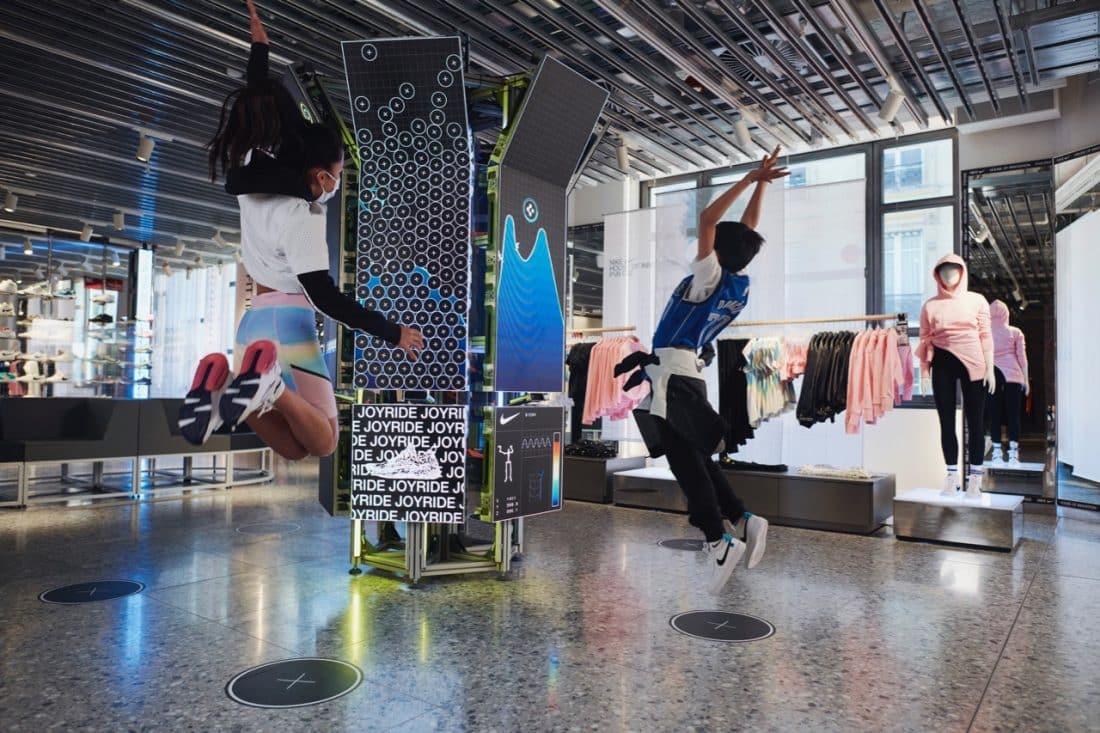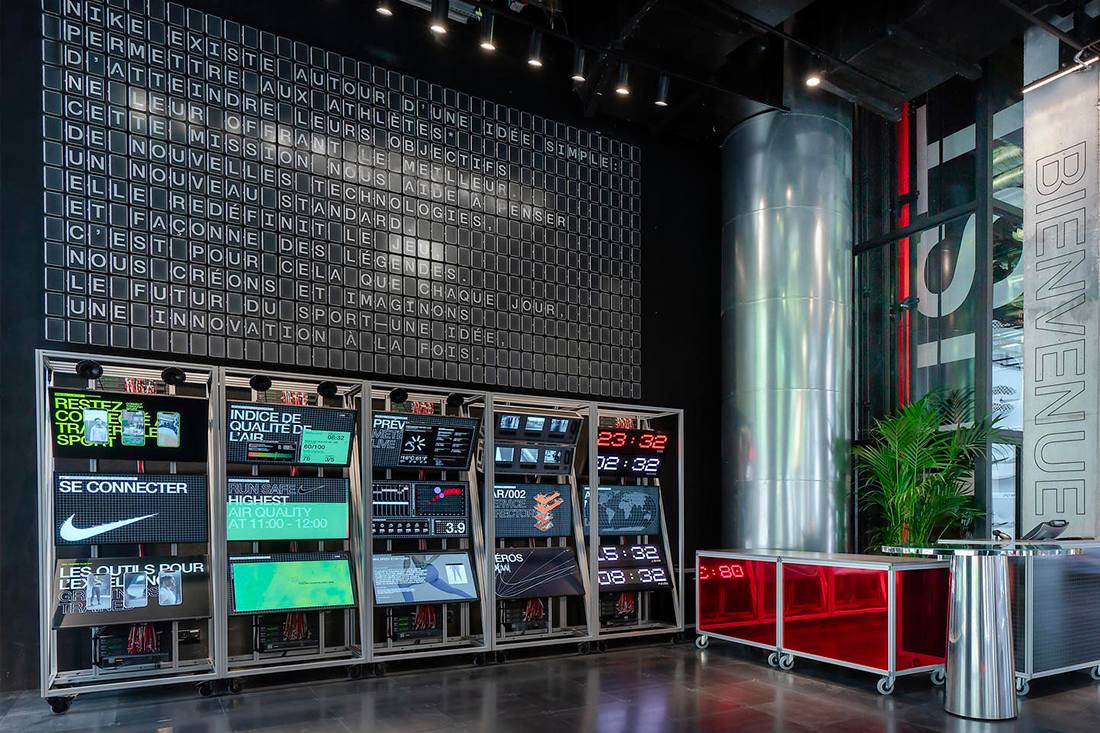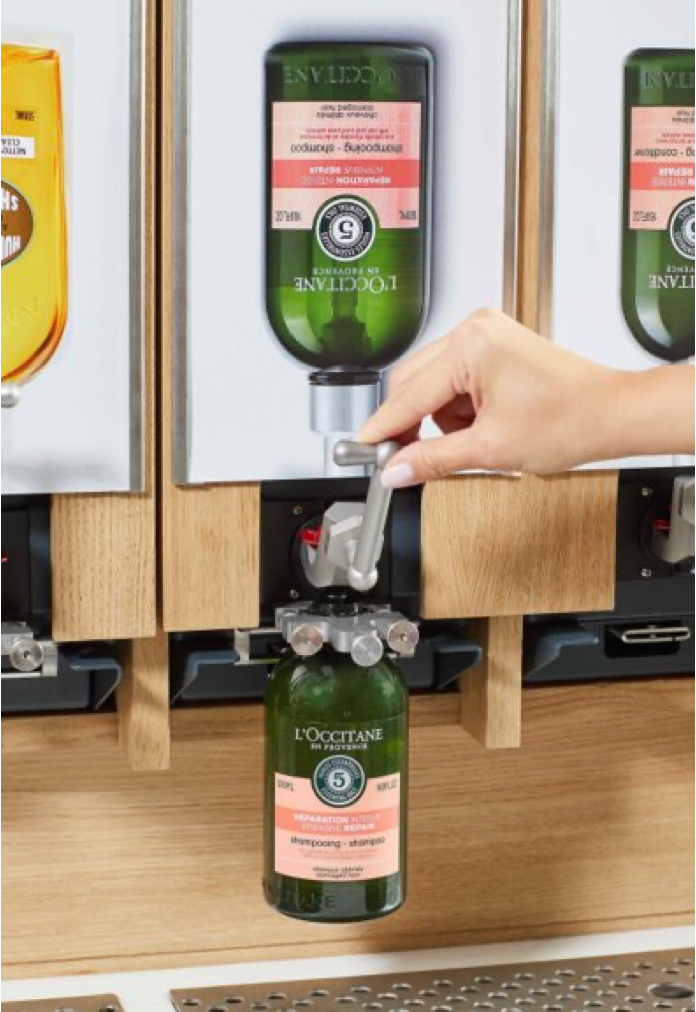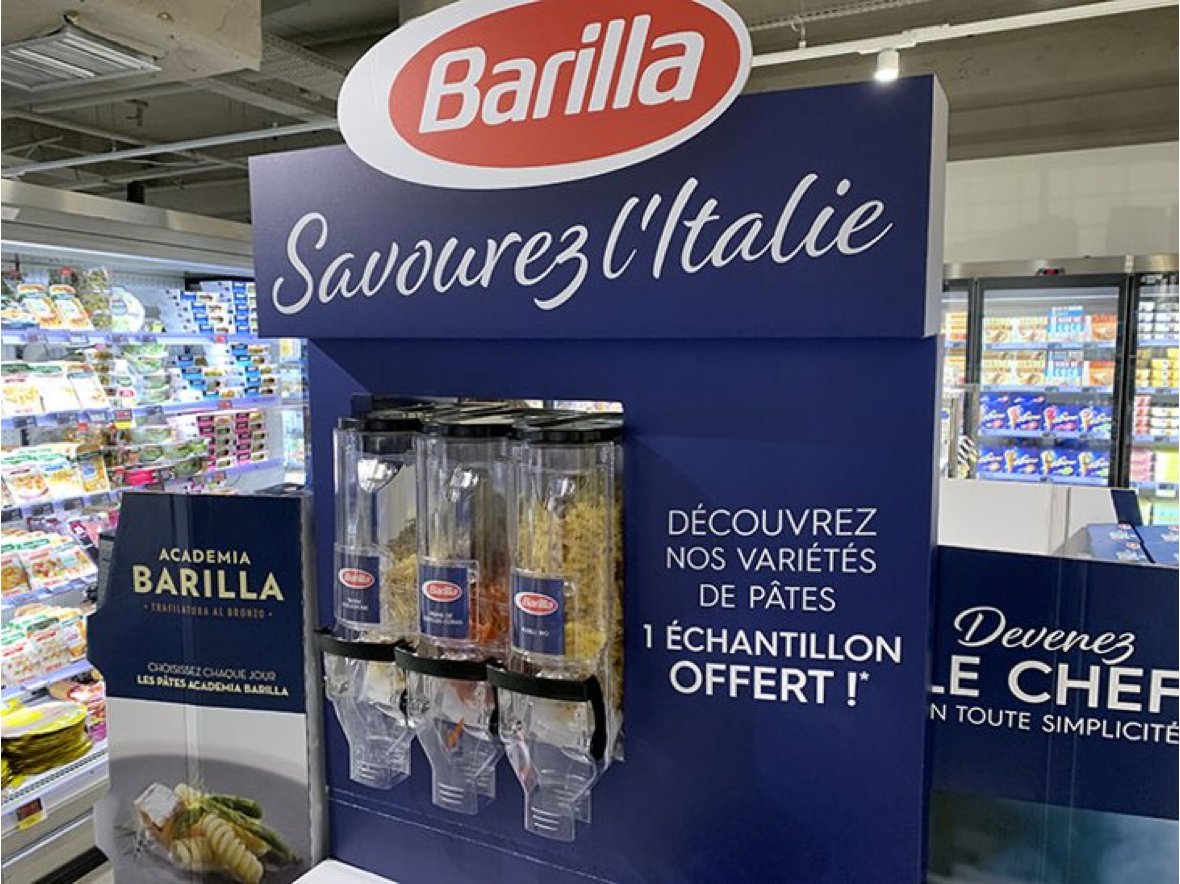The COVID-19 pandemic has changed consumption and buying habits like never before. Consumers expect more and better from brands. Clients and brands alike have had to rethink the way they approach retail spaces. Today, a brand must not only create a retail space but think it, design it and give it meaning. We might think that e-commerce has put a strain on retail but, rest assured, this crisis has given birth to a lot of new perspectives for retail design.
To this day, it’s still difficult for retailers to get customers back into stores due to safety and security concerns. But on the other hand, consumers are storming into stores as a sign of a return to normal life. However, a new era is emerging. The era of Retail 3.0. The one where the consumer is in charge, where people understand that they have the power to make brands understand their needs.
Retail is no longer just about selling a product in a physical store, it is also about building a relationship between a brand and its audience.
Consumers no longer only want to be sold a product, they want to establish and build a real relationship with the brand. How? Through experience.
Customers are looking for experiences. Experiences they can’t get online. They want to be able to make it worth their time to go there. And it’s through design, that a brand can craft those experiences and meet that need, in whatever way possible. To do this, you must be able to project yourself. Question yourself and ask yourself: How will this space be crossed? What will the visitors feel? What will they experience? What is the attraction, beyond the products on sale? It is by answering these questions in an agile, realistic and relevant way that a brand can design experiences within its retail spaces.
How can you think about in-store experience without considering digital? Today, we have a lot of devices and tools at our disposal to bring to life experiences that take full advantage of new technologies. Digital can allow a space to exist beyond its limits. And this, by gathering and uniting in the service of experiences for well-being, for play, for learning.
Let’s take the Nike brand as an example. Fully turned towards the future and focused on digital, the brand has launched a brand new retail concept: the House of Innovation. Located in Paris, this store offers an immersive and digital journey from start to finish to its visitors. This is illustrated in particular by the installation of a control wall at the entrance, an interactive play area via terminals for children and many others…


However, technology also has its limits. It should not be perceived as too intrusive and suffocating for customers. This is why it must be approached subtly, and not be placed in the foreground in a too direct way, but in the background.
With digital, brands can create magical experiences. Experiences where customers could feel like the space was designed especially for them. A place where they can feel good and that, of course, will make them want to come back. The brand can also see its benefit. By creating connected experiences within its spaces, it generates traffic to serve its strategy.
New technologies have given retailers a playground of limitless possibilities, and we are still far from seeing the end of it.
It’s not news, we are facing the biggest environmental crisis our planet has ever experienced. Beyond the implementation of CSR policies, brands must design retail spaces that respect the environment. Spaces with meaning, which will invite us to reflect and rethink our buying habits.
There is a real opportunity for brands to design for our collective future. This includes flexible and responsible spaces. But it is also illustrated by measures put in place to rethink the way we consume. For some brands, this will be the installation of refill stations within their spaces. Stations in order to refill our products (liquids, bulk…) rather than buying a completely new one which will consume much more plastic. This is the case for L’Occitane, which has installed refill fountains in more than 58 stores around the world. Retailers are also getting involved, including Monoprix, which has extended its refill service to other major grocery brands: Barilla pasta, salted biscuits Michel & Augustin, Krema et Lutti gummies… For other brands, it can also be spaces specially designed to allow their customers to give a second life to their used products.




Finally, the retail space itself needs to be rethought. Because yes, the realization of retail spaces has a strong impact on our environment. It is therefore essential to integrate this aspect into the design of a project. The design as well as the materials used must be, as much as possible, respectful of the environment. This is not just another constraint for brands, but a real way to act and create value.
One thing is certain: the global pandemic did not mark the end of retail spaces. On the opposite, in fact. A second life is presented to it. A second wind to perpetually renew and reinvent itself.

